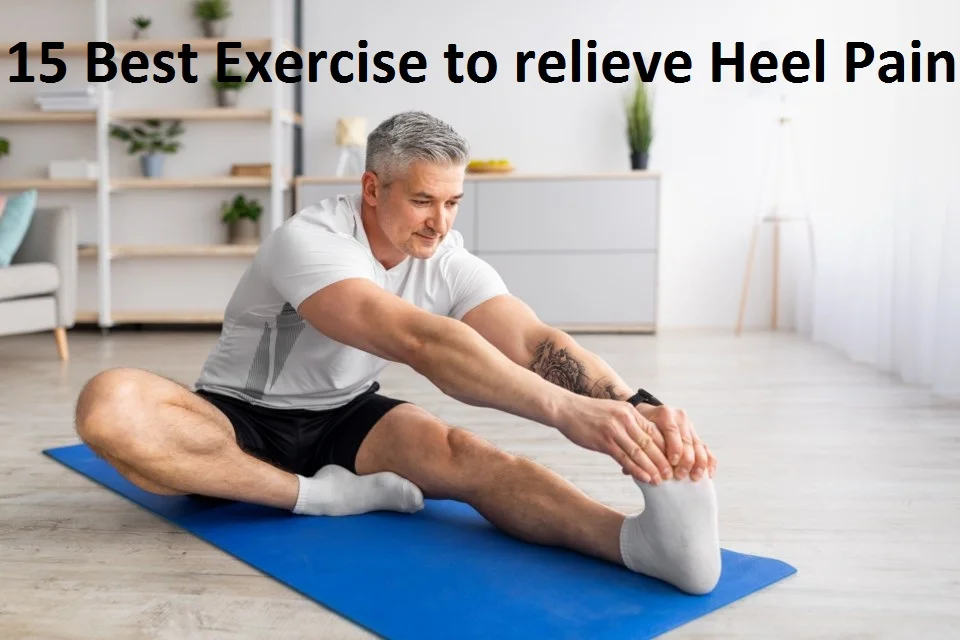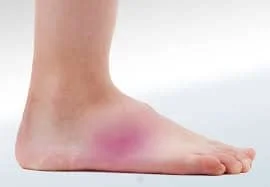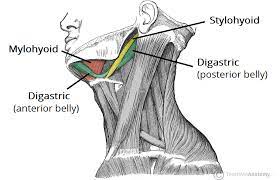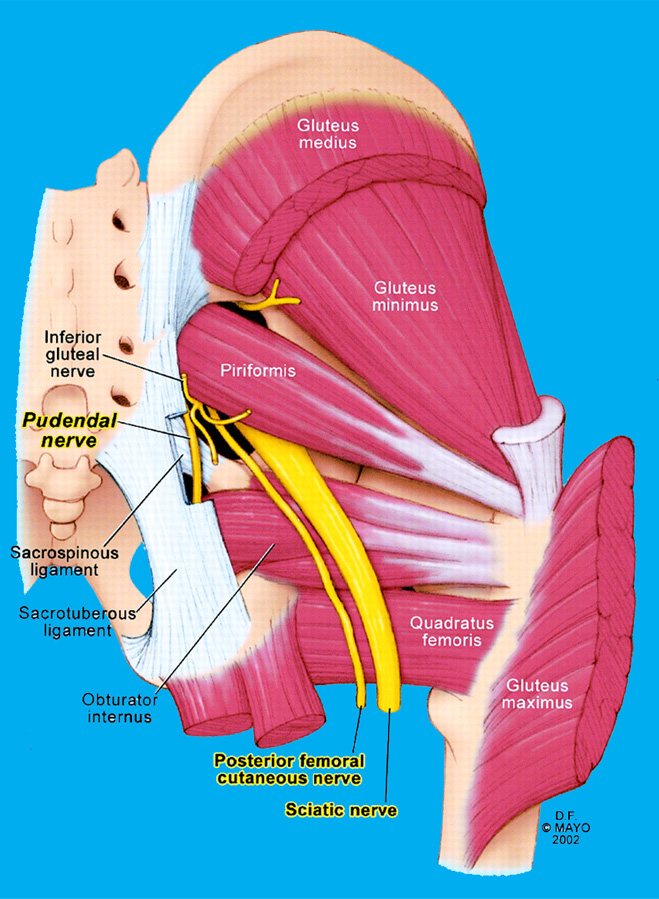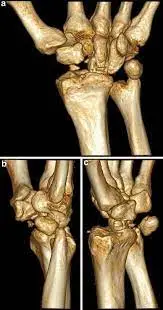15 Best Exercise to relieve Heel Pain
Table of Contents
Introduction
Exercise for Heel pain plays a crucial role in strengthening the muscles, tendons, and ligaments surrounding the heel and improving overall foot function. The right exercises can help alleviate pain, reduce inflammation, increase flexibility, and prevent future occurrences of heel pain.
Heel pain is a common condition that can be caused by various factors, including plantar fasciitis, Achilles tendonitis, stress fractures, or heel spurs. It can significantly affect one’s ability to walk, exercise, and perform daily activities comfortably. While seeking proper medical evaluation and advice is essential, incorporating specific exercises into your routine can be beneficial in managing heel pain and promoting healing.
Rest, orthotics, and exercises (stretching, range of motion exercise) reduce pain over time. If you don’t take treatment during the acute phase of the condition or don’t treat heel pain, you may develop chronic problems that require a longer recovery. Heel aches could have reasons that are not because of underlying disease. Examples consist of poorly becoming shoes, sporting excessively heeled shoes, extended duration on feet, overuse including lengthy walks or marathons, sprains, traces, or trauma. Heel ache does not often need surgery.
In the physiotherapy field, there are different types of exercises such as stretching exercise (the stretch of a particular muscle Gastrocnemius, soleus muscle), assisted exercise, movement of the ankle joint, and end strengthening exercise which gives strength to the muscle.
Condition Which leads to Heel Pain
Heel pain is a common symptom of foot and ankle conditions. Pain may occur side of the heel or behind it. there are symptoms of many conditions which lead to pain in the heels, including:
- Plantar fasciitis
- Achilles or flexor tendonitis/tendonosis.
- Bone spurs.
- Calcaneal apophysitis or Sever’s disease(mostly seen in sports players.)
- Retrocalcaneal bursitis
- Stress fractures.
- Inflamed tendons.
It’s important to have a physical and medical assessment to help you confirm and diagnose the exact causes or exact condition of your heel pain so that you should take proper physiotherapy treatment begin.
Heel pain can make it difficult to do regular activities such as walking and doing daily activities. commonly painful heel conditions heal with nonsurgical treatments such as medicines or physiotherapists or orthosis, but your body needs time or rest to recover from pain.
Risk factors for Heel Pain
Anything or any particular activity that puts a lot of pressure and strain on your foot can reason of heel pain. your walking pattern and your foot’s shape (foot structure) are also factors of heel pain.
increase the chances of developing heel pain you this condition:
- Are overweight (have obesity).
- Have foot and ankle arthritis, flat foot condition, or high foot arches.
- high-impact activity (Run or jump in sports or for exercise).
- Prolonged standing, especially on cemented flooring.
- Wear fashionable high heels or uncomfortable fitted shoes without arch support and/or cushion.
Symptoms of Heel Pain
Heel pain symptoms depending on the conditions.
Pain
The excess bony growth on the heel.
Discoloration (bruising or redness).
Stiffness.
Swelling.
Tenderness.
Pain after standing from a resting/sitting position.
Best Exercises For Heel Pain
Foot & Ankle Up & Down
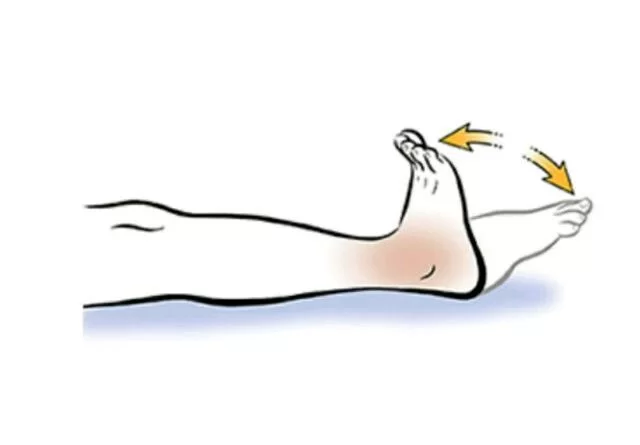
This may be a very clean and simple exercise for the condition. begin with the supine lying position. after which circulate your foot and ankle in planter flexion and extension you could do the exercise without aches (ache loose range) you need to care of the feeling of moderate to mild stretch-not extra than that.
Repeat 40-50 instances in line with consultation do three units in line with the day. the gain of this exercise is its miles increase blood circulation.
Foot & Ankle In & Out
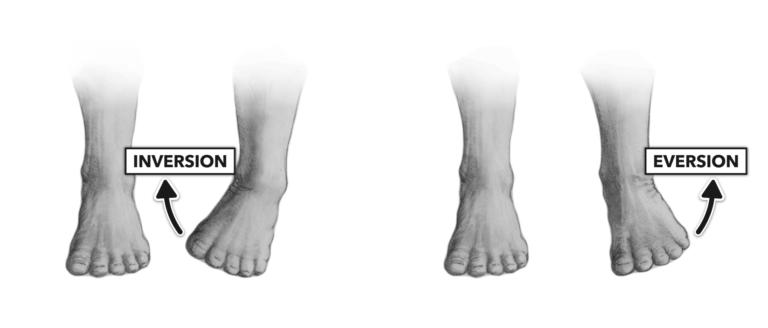
This is likewise smooth ankle movement is known as inversion and eversion. begin with the supine role then Move your foot and ankle internally it’s known as inversion and out as ways as you could pass is known as eversion without ache(ache unfastened variety) and supplied you need to care of the feeling of slight to slight stretch not extra than that. Repeat 40-50 instances in line with consultation do three units in line with the day. that is performed actively and passively. It is to preserve or regain the regular variety of ankles.
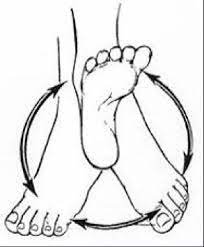
Foot and Ankle Circles
This exercise additionally do actively or passively. begin with the supine mendacity function Move your foot and ankle in a circular movement with ache loose variety. furnished you need to care of the feeling of mild to slight stretch. Repeat 40-50 instances in step with consultation do three units in step with day. that is performed actively and passively. It is to keep them or regain the everyday variety of ankle.do that motion of the ankle joint in ache loose variety.
Standing heel raise
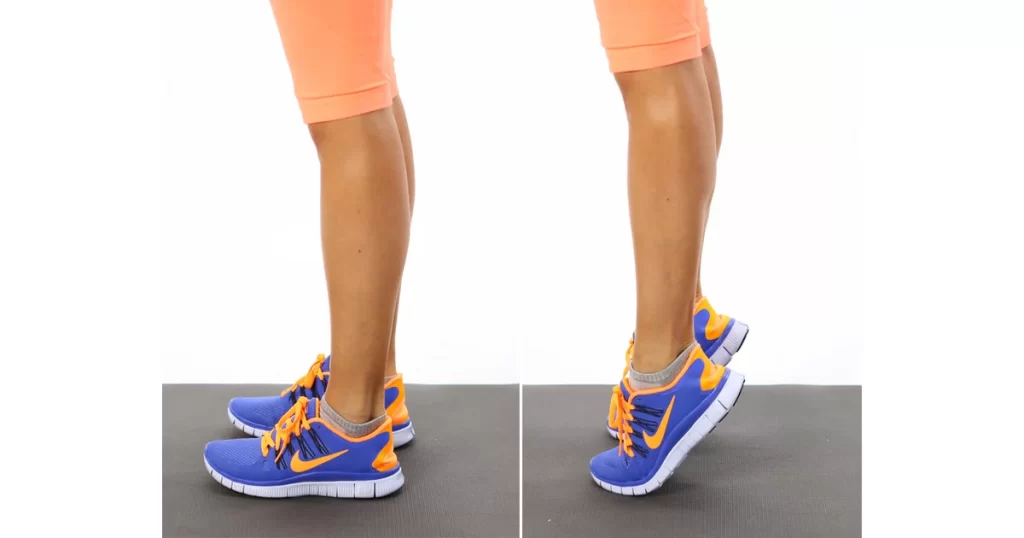
The standing heel exercise performed at the same time as status facilitates reinforcing the calves and stretching the Achilles tendon. this exercise strengthens the calf muscle groups gastrocnemius, soleus, and planters. Stand on a flat or barely accelerated surface, stability your weight at the balls of your feet.
Gently raise yourself up onto your feet and keep the “peak” function for some seconds, then decrease again to the ground. You can repeat this up to twenty-five instances in consultation and do 3-four units a day. and keep the placement for 5-10 seconds among exercises. till you experience no pain. Raise and decrease yourself slowly, as managed motion is the factor of the workout. the status heel increase exercises you can upload at some point of development at some point of.
Calf stretching
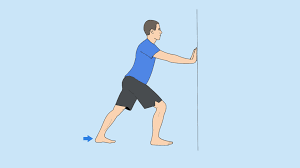
Stretching the Achilles tendon facilitates lessening strain at the touchy elements of the ankle close to Haglund’s tubercle. Step 1: Stand in front of the wall the distance should be 90-degree shoulder abduction. arm’s length from the wall. start with the status function after which barely flex and area your fingers at the wall.
Step 2: Leave one leg wherein it became and pass the alternative leg forward. Lower each heel to the ground, maintaining your legs instantly. Lean forward till you sense a moderate stretch on your returned leg. Step three: Hold the stretch for 30 seconds, then transfer sides. You can repeat this technique in 5 or six instances a day. You can bend the returned knee if necessary.
Keeping your heel on the ground is greater essential than maintaining your leg instantly till you sense a stretch withinside the returned of your leg. Do this stretch three instances according to workout, do three units a day, and keep this function for approximately 30-60 seconds among workouts, that’s essential.
Towel Stretches

This stretch gives a deeper flex of the Achilles tendon.
Step 1: Sit on the floor with each leg stretched out in front of you.
Step 2: Take a towel or a workout band and loop it around one foot, conserving one lead to both hands.
Step 3: Gently pull lower back at the towel to tug the ball of your foot in the direction of your body. You ought to sense a mild stretch withinside the lower back of your calf. Hold for thirty seconds, then change sides.
You can repeat this stretch exercise in 5 or six instances daily.
Seated plantar fascia stretch
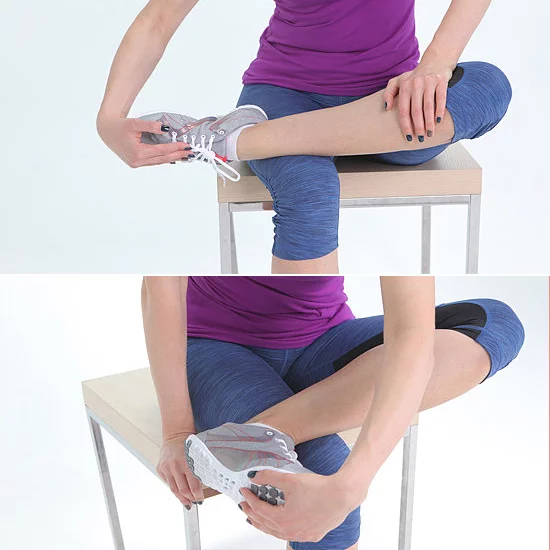
Planter fascia easy stretch is taken into consideration the plantar fascia. It can assist in increased mobility and decrease short- and long-time period heel pain.
First, you have to Sit in a chair and go one leg over the alternative, together with your ankle resting for your contrary knee and your heel has to be free.
you have to position your one hand for your ankle for stabilization and pull your ft using any other hand.
You have to experience a stretch with the lowest of your foot.
you have to keep this role for 30 seconds.
performed it three times.
Repeat on the alternative foot.
Towel Scrunches

These towel scrunches facilitate growth trendy foot dexterity and decrease tightness withinside the Achilles tendon.
Step 1: Place a towel flat on the floor in the front of a chair, then take a seat down withinside the chair together along with your heels on the brink of the towel.
Step 2: With one foot, attain out and use your ft to seize the towel, then pull the towel in the direction of you below your feet.
Step 3: Repeat till you run out of towels, then repeat the entire workout together along with your different feet.
You can do that three-time instances daily.
Seated Ankle Alphabet:
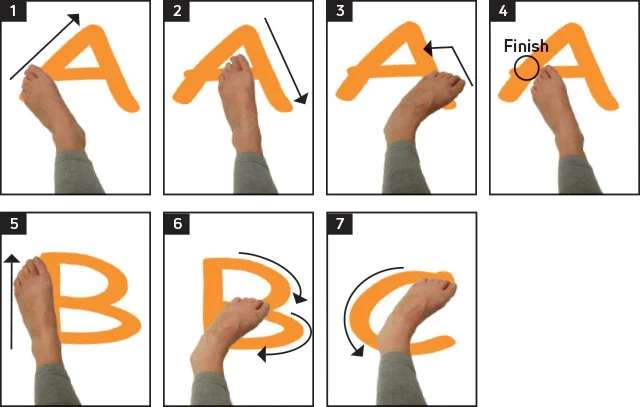
Take a sitting position in a chair and raise your one foot. Imagine drawing the letters of the alphabet with your toes in the air.
Move your ankle and foot in different directions to form each letter. This exercise helps improve ankle mobility and strengthens the muscles around the foot and ankle.
Resistance Band Ankle Dorsiflexion:
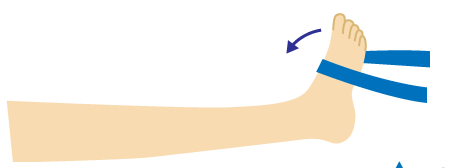
Keep your legs in front of you while you sit on the floor. Wrap a resistance band around the ball of one foot and hold the ends of the band in your hands.
Flex your ankle by pulling your toes toward you against the resistance of the band. Slowly return to the starting position. Perform 10-15 repetitions on each foot.
This exercise targets the muscles that help support the arch and relieve tension in the plantar fascia.
Eccentric Heel Drops:
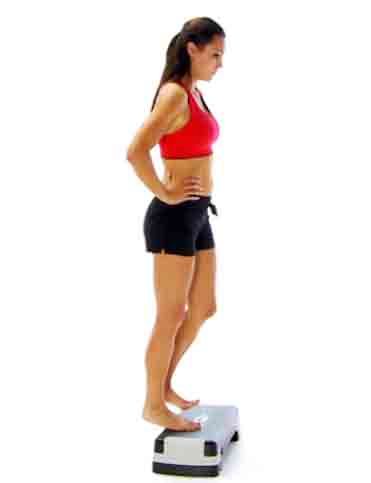
Put your heels hanging off the edge of the step or curb while you stand there. Slowly lower your heels below the level of the step, feeling a stretch in your calves.
Then, rise up onto your toes again. Perform 10-15 repetitions of eccentric heel drops. This exercise helps strengthen the calf muscles and Achilles tendon.
Regular Ice
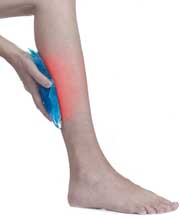
Regularly making use of ice can assist to lessen aches and infections with heel bursitis
Applying ice frequently to the lower back of the heel is a tremendous remedy for heel bursitis. It facilitates to lessen ache and infection, and ought to be implemented numerous instances a day.
Visit the ice remedy segment to discover approximately the nice methods to use ice and a way to use it competently and effectively – it’s now no longer as easy as simply popping a bag of frozen bags.
Orthotisis(Heel cushion)
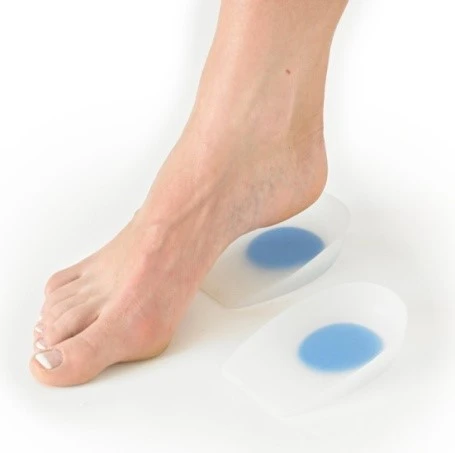
The major motive of this orthosis is for higher stability, reducing the strain on joints, stepping forward blood circulation, and offering greater cushioning. Using heel pads in footwear can help lessen the signs and symptoms of retrocalcaneal bursitis. you could use the heel pad or heel cushion.
If you’ve got tight calf muscle tissue and Achilles tendon because of heel bursitis, sporting heel wedges on your footwear can help. This is a simple gel or felt wedge that barely elevates your heel to lessen the strain on the Achilles tendon.
In maximum cases, after some weeks of everyday stretching exercises, the heel wedge is not needed. Both footwear ought to use heel guards in order that the period of the legs does now no longer differ, which could result in lower back and knee pain.
Achilles tendon streching

Stretching the Achilles tendon and calf muscle is a notable exercise to decrease the ache and offer flexibility to the muscle and improve heel bursitis. Stretching the muscle tissues that tighten the bursa will decrease (ache) your symptoms.
Stretching may be finished via way of means of setting the only foot in opposition to the wall with the heel resting on a tender ground surface. Lean in opposition to the wall, which you have to then experience for your calf muscle or the again of your calf. You can also use stairs or wedges to stretch the calf. This may be finished via way of means of setting the front of the foot on the threshold of the step and slowly decreasing the heel with an instant leg and tensing the muscle.
Do this stretch three instances in line with the session, do three units a day, and preserve the location for about 30-60 seconds among exercises, that’s essential.
Resisted ankle inversion
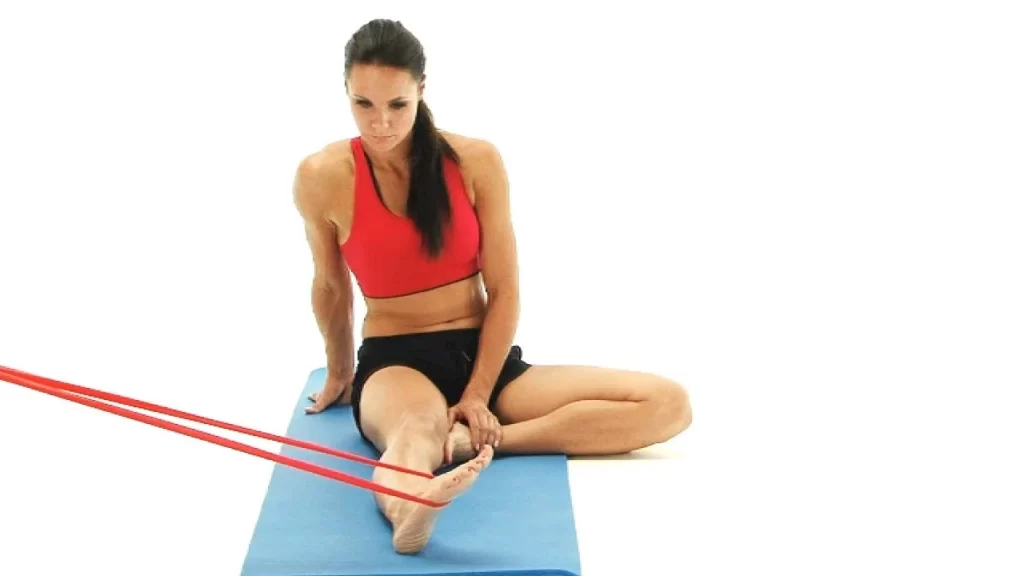
Ankle inversion physical activities assist you increase electricity withinside the muscle groups that help your ankles and feet. This workout calls for a resistance band or theraband. You need to take the Sitting function on the ground together along with your legs instantly in front of you.
Then modify a resistance band or theraband round heel spur foot Or use a theraband and make a loop and positioned your foot thru it.
you may carry out it with the aid of using yourself or take the assistance of a different man or woman Move your pinnacle a part of your foot inward, and pull towards the band or hand.
Repeat 10 times, rest, and repeat.
extrude the edges and repeat on the opposite leg.
Precautions during exercise
Stop doing the workout in case you sense any pain at the same time as the stretching exercises.
Perform the workout in the right manner, supply the right stretch, supply the right preserve, and supply the right repetition.
If your healthcare counseled you need to take a rest. in case you sense an ache at the same time as the workout.
Wear-free garments at the same time as workouts which offers loose movement in your body.
Give the stretch to the tight muscle sense uncomfortably however you need to in no way sense a stabbing ache and sharp ache.
You need to in no way preserve the breath at some stage in your workout. at some stage in the workout, you need to take a deep inhale and slowly exhale. protecting the breath increases the anxiety for your muscle which results in increased blood pressure.
How to Prevent Heel Pain?
You need to save your heel ache by carrying comfortable equipped shoes with shock-absorbent soles, inflexible shanks, and supportive heel counters; you need to put on suitable shoes for every bodily hobby; warming away from bed stretching sporting activities earlier than any hobby which gives the relaxation to the muscle; and pacing your self at some stage in the activities.
Avoid carrying shoes with immoderate excessive heels and soles. If you’re overweight or obese, dropping weight might also assist save you heel aches.
Other treatments option for Heel Pain
Taping
Your physical therapist can also additionally advocate a heel taper to deal with retrocalcaneal bursitis. It stabilizes and decreases ache withinside the area. The tape, that’s located at the again of the heel, may be used for 5-7 days to alleviate signs.
Medicines
The ache and different signs related to retro calcific bursitis may be controlled with medicines, normally oral nonsteroidal anti-inflammatory tablets, referred to as NSAIDs for short. You in all likelihood recognize those tablets as typically prescribed ache relievers consisting of ibuprofen and naproxen. The remedy is utilized in affiliation with rehabilitation software to alleviate the signs of retrocalcaneal bursitis. Sometimes topical anti-inflammatory medicines consisting of diclofenac ointment or cream can also additionally be prescribed to alleviate nearby heel aches.
Shoes and footwear
Changing footwear may be a critical part of treating heel pain. You need to not forget to carry open-toe footwear for a while, as this relieves stress at the heel. Sometimes heel pain signs arise whilst you all suddenly transfer from excessive heels to flat footwear or vice versa. It can be an excellent concept to briefly use a medium hobby to alleviate signs.
Athletes can buy comfortable and appropriate footwear frequently due to the fact the aid and suit can alternate at any time because of the profession, especially with continued use. Your physiotherapist might also additionally recommend placing the orthosis heel cushion below the inflamed heel for higher stability, reducing the pressure on joints, stepping forward in blood circulation, and offering extra cushioning.
A note from Samrapan Physiotherapy Clinic
If you’re struggling with this circumstance so first consult with the physician and begin the medication and physiotherapy treatment. each treatment supplies u great end result from the worst circumstance. Gradually modern stretching(with right length and frequency) of the calf muscle and Achilles tendon may also assist to alleviate aches at the subcutaneous calcaneal bursa.
The stretch is maintained in between the stretch for approximately 30-60 seconds that is necessary after which is relaxed. Physiotherapy treatment remedies encompass gentle tissue massage (specifically to the calf muscles), joint mobilization (of the ankle, subtalar joint, and foot), dry needling, electrotherapy (e.g. ultrasound), stretches, using heel wedges, using crutches, arch aid taping, ice or warmth remedy, sporting activities to enhance strength, flexibility, stability, and middle stability, biomechanical correction (e.g. using orthotics).
FAQs
yes, regular exercise can help to reduce or heal heel pain. exercise includes stretching they provide flexibility to the muscles. strengthening exercises provide strength to particular muscles. exercise considers the strengthening and stretching of the ligaments and muscles connecting to your heel. Start with the pain-free range exercise after that shift to the strengthening exercises.
It totally depends on your heel condition. if it is an acute period of your condition so maybe walking may increase the heel pain and make or worst condition so during the acute phase you should avoid walking and take rest after pain relief you can start walking. start with the minimum walking.
Planter facia massage..
calf stretching.
heel raise.
flexion and extension of the ankle.
inversion and eversion of the ankle.
resisted band inversion.
resisted band eversion…
Achilles tendon streching..
Towel Stretches.
Towel scrunches.
there is one common condition of the foot that often occurs due to the increase in the sugar levels in the blood can worsen your foot condition. plantar fascitis is a common condition caused by inflammation of the planter facia, a band of tissue that runs along the top to the bottom part of the foot. to decrease the changes in foot condition you should take care of your sugar level. maintain your diet and do regular exercise which makes you fit and healthy
there is one common condition of the foot that often occur due to the increase in the sugar levels in the blood can worsen your foot condition. plantar fascitis is a common condition caused by inflammation of the planter facia, a band of tissue that runs along the top to the bottom part of the foot. to decrease the changes in foot condition you should take care of your sugar level. maintain your diet and do regular exercises which make you fit and healthy.
When in heel pain you can massage the planter facia ligament the ligament is connected to the heel bone so you can use your thumb and fingers for massage. massage can be in a circular motion and you can use any type of ointment which include diclofenac which reduces the pain(you can also use jell or oil).in the acute phase, deep massage should avoid. planter facia massage starting from the bottom of the foot and down to the top part of the foot.
Massage therapy is used for reducing the pain and tightness of muscles and also increases blood circulation or the massage area. which provides pain relief and relaxation to the tight muscles. massage therapy also uses the break of the nodules which provide relaxation to the muscles.
Plantar fasciitis.
Achilles or flexor tendonitis/tendonosis.
Bone spurs.
Calcaneal apophysitis or Sever’s disease(mostly seen in sports players.)
Bursitis.
Stress fractures.
Inflamed tendons.
Gout is a sort of inflammatory arthritis due to excessive tiers of uric acid for your body. This extra uric acid can shape a substance known as urate crystals. When those crystals have an effect on a joint, along with the heel, it may bring about unexpected and extreme symptoms, including pain.

